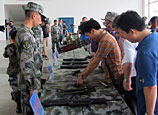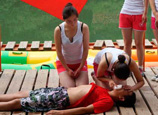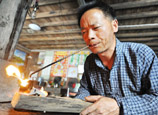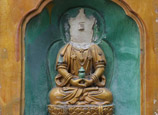
Chinese Stone Drum Park Baoji Bronze Ware Museum
Located in the Baoji city, Chinese Stone Drum Park is a cultural and ecological park, blending “heritage site protection, bronze ware exhibition, showcase for stone drum culture, sightseeing, archaeological research and entertainment.” The Bronze Ware Museum inside the park is the largest bronze ware museum in China, devoted to displaying many kinds of invaluable unearthed relics, especially bronze ware.
Zhougong Temple
Zhougong Temple is situated at the south foot of the phoenix mountain, 6.5 kilometers away from the northwest Qishan County, Shaanxi province. Built to commemorate the politician Zhougong---Jidan, the temple is the largest and the most completely preserved ancient architectural complex in Baoji area. In ancient times, the landscape of the Zhougong Temple was much appreciated by great poets, such as Han Yu, Su Shi and Kang Hai who all went sightseeing here, heaving a deep sigh of relief about the past. These great literati left behind more than 140 traveling poems and articles and 30 memorial stone tablets here.
Fishing Terrace
Fishing Terrace is a national AAA-level scenic area, where the well-known historical allusion “Jiang Ziya fishing, King Zhou visiting the talents” took place, and where the classic Legend of Deification drew materials from. The terrace is famous for four cypresses, two pieces of stones and three temples. The imposing temples built in the Han Dynasty and prospered in the Tang Dynasty lie at the foot of a mountain. The deep-set knee prints made by Jiang Ziya are still clear, also named “the first fishing terrace in China.” The cypresses (each about one thousand years old) were planted in the Tang Dynasty and are so thick that it takes three people to get their arms around one of them. These qualities would enrich your knowledge by reflecting on the past, making your visit to this cultural site with profound history more worthwhile.
















 Man commits suicide, rescued by his wife in NE China
Man commits suicide, rescued by his wife in NE China


![]()
